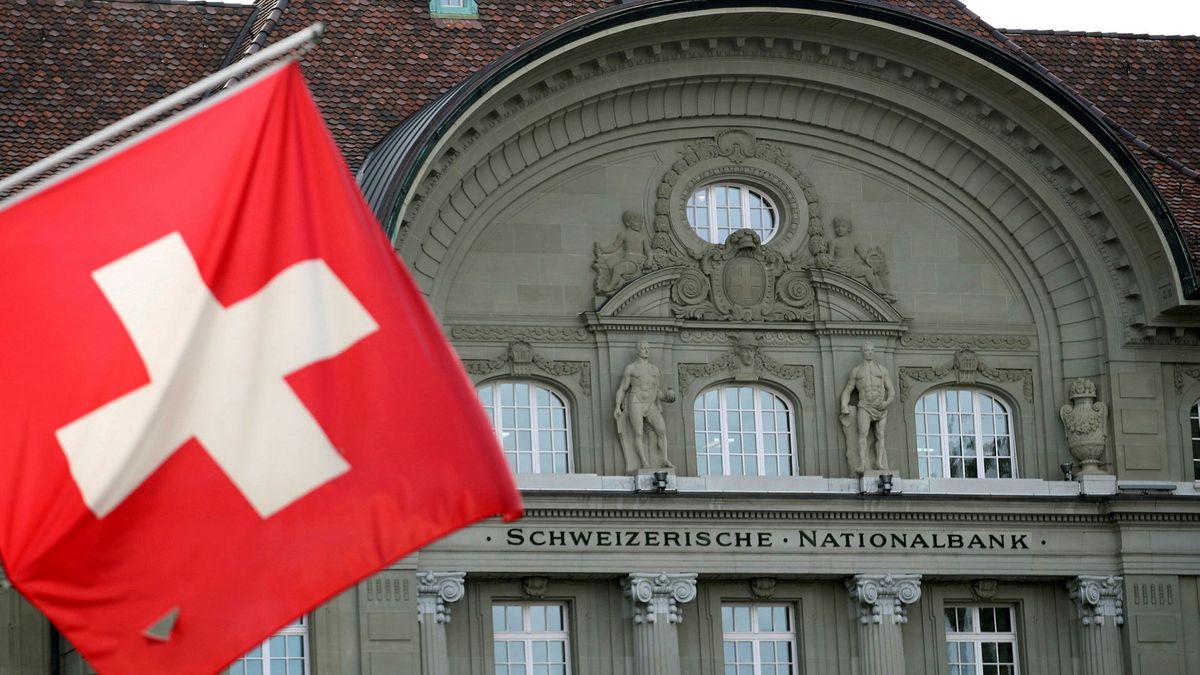Switzerland - The Last Stand Against Inflation
What is the current issue to do with inflation? Why is inflation at extremely high values is so called stable economies? What is Switzerland doing differently? How is helping them fight off high levels of Inflation?

By Julian Olsen-Pendergast
If we focus on the economic problem of high inflation in 2022, we can observe its prevalence in advanced economies worldwide, with some countries experiencing double-digit annual price increases. Even countries that were known for their monetary stability are now facing high inflation rates. However, these headline figures may not fully reflect the actual expenses incurred by households.
In Europe, we can see these inflation figures represented. For example, France has reported a year-on-year inflation rate of 6.2%, which is significantly higher than the European Central Bank's target rate of 2%. On the other hand, a country like Latvia, despite using the same currency, has an inflation rate of 22%, which is much higher. The discrepancy arises because Latvia is geographically closer to Russia and Ukraine, making it more vulnerable to disruptions in that region. Latvia's proximity to Russia's now-shut industrial centers means it conducted more business with Russia and suffered more from trade sanctions.
However, inflation measurements go beyond these geographical factors. France and Latvia measure inflation differently. Latvia is a poorer country, and households in poorer countries tend to spend a larger portion of their income on essential items like food and energy, whereas in wealthier countries, these items constitute a smaller share of household expenses. Consequently, the Consumer Price Index (CPI), which is the primary tool for measuring inflation, in Latvia is more heavily influenced by food and energy prices. Since these markets are significantly impacted by global events, Latvia's inflation rate appears higher when measured using its CPI compared to France's inflation rate. If Latvia's inflation rate were measured using France's CPI, it would be lower, and if France's inflation rate were measured using Latvia's CPI, it would be higher.
This does not imply that these calculations are flawed; they are designed to provide an understanding of the economy and the people within a country. It is important that the CPI reflects the spending habits of people in that particular economy.
Therefore, direct comparisons of inflation rates between countries with different socioeconomic conditions can often be misleading. Despite this, France consistently maintains a lower inflation rate compared to other EU countries. However, it is worth noting that Switzerland, a European country, has an inflation rate half that of even France. The factors contributing to Switzerland's success in managing inflation require further analysis.

Switzerland, being a wealthy country with its citizens among the wealthiest globally, has an economy that is less susceptible to inflation. Wealthier individuals tend to spend a lower proportion of their income on essential goods and a higher proportion on luxuries. Therefore, if essential goods become too expensive due to inflation, wealthier households can choose to cut back on luxury spending, such as eating out at restaurants. This reduction in demand for certain goods and services can lead to price adjustments by businesses, such as offering sales or discounts, to attract customers back.
On the other hand, poorer households have limited flexibility in reducing their spending on essential items like food because they cannot go without them. This means they are more likely to bear the brunt of rising prices for essential goods during inflationary periods.
In Switzerland, economists have also focused on the relative stability of the Swiss franc compared to the US dollar and other currencies. The Swiss franc has not experienced significant depreciation in the past year. One reason for this stability is that the Swiss franc is backed by substantial reserves of gold, financial assets, real estate, and bonds from other governments. This backing provides the Swiss Central Bank with the ability to ensure currency stability in the Foreign Exchange Market. If the value of the Swiss franc becomes too low, the central bank can sell its assets in exchange for francs, and if the currency becomes too high in value, the central bank can trade francs for more assets.
Overall, the combination of Switzerland's wealthier population and the stability of the Swiss franc contributes to the country's ability to manage inflation effectively.

Another reason why Switzerland is managing the global inflation situation effectively is its high level of trade. The country heavily relies on both imports and exports, and economists refer to this as trade intensity, which is the total value of all trade relative to the size of the economy.
Switzerland imports approximately $300 billion worth of goods and services each year and exports a similar amount. This results in a per capita import and export value of around $35,000 per citizen. In comparison, the United States exports around $4,000 per capita and imports just under $7,000 per capita.
Traditionally, international trade has been seen as a contributing factor to inflation, especially with global supply chains and trade tensions causing various challenges. However, it's important not to overgeneralize economic theories. Most of Switzerland's imports come from neighboring countries in the European Union (EU) and the United Kingdom (UK). These trade routes are highly direct, utilizing trains and trucks that are not affected by closed ports or delays at distribution centers. Additionally, Switzerland can leverage its strong currency to purchase these imports at a 10% discount compared to 12 months ago.
Considering that the average Swiss citizen imports $35,000 worth of goods and services annually, if these purchases were made from Euro countries using their Swiss francs, they would benefit from a $3,500 (10%) advantage solely due to their strong currency. This offsets a significant portion of any inflation they may experience.

On the other side of the equation, Switzerland's exports consist of high-end goods and services with significant value added. These are less likely to be heavily impacted by global unrest. Additionally, factors such as the country's reliance on hydroelectric power for a majority of its energy make Switzerland less susceptible to the price volatilities of oil and gas, which many other European countries are facing.
However, it's important to note that there isn't much to directly learn from Switzerland in terms of replicating its success. Apart from recognizing the benefits of investing in high value-added industries and renewable resources, Switzerland has actually struggled with deflation in the past, which hinders growth in an otherwise prosperous country.
Most economies would need to sacrifice significant amounts of economic growth to attain a position as stable as Switzerland's, which may not be a viable option considering the high opportunity cost. While Switzerland enjoys a low opportunity cost choice due to its citizens' high standard of living, sustained growth could be crucial for lifting millions of people out of poverty in other economies.
It's unrealistic to expect other countries to simply replicate what Switzerland is doing, just as it's not feasible for someone to become a multi-millionaire overnight by looking at the wealthiest individuals. Each economy faces unique challenges and circumstances that require tailored solutions and strategies.


